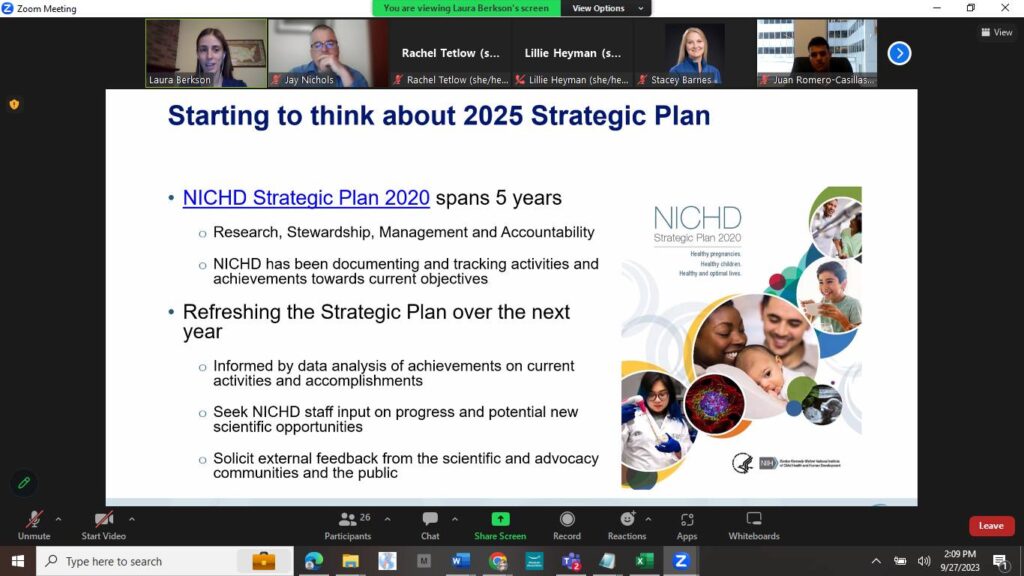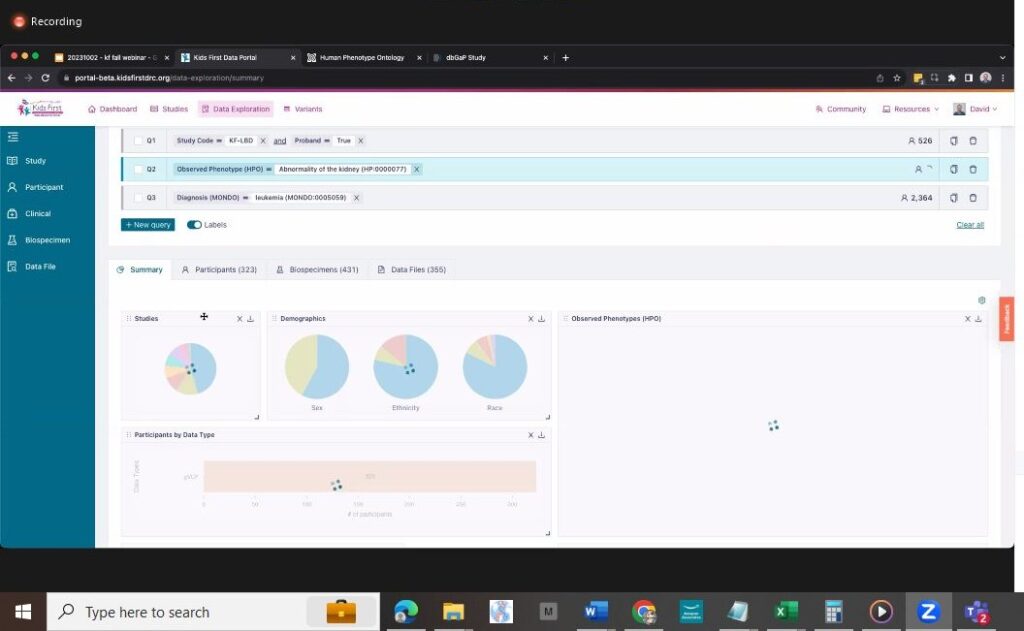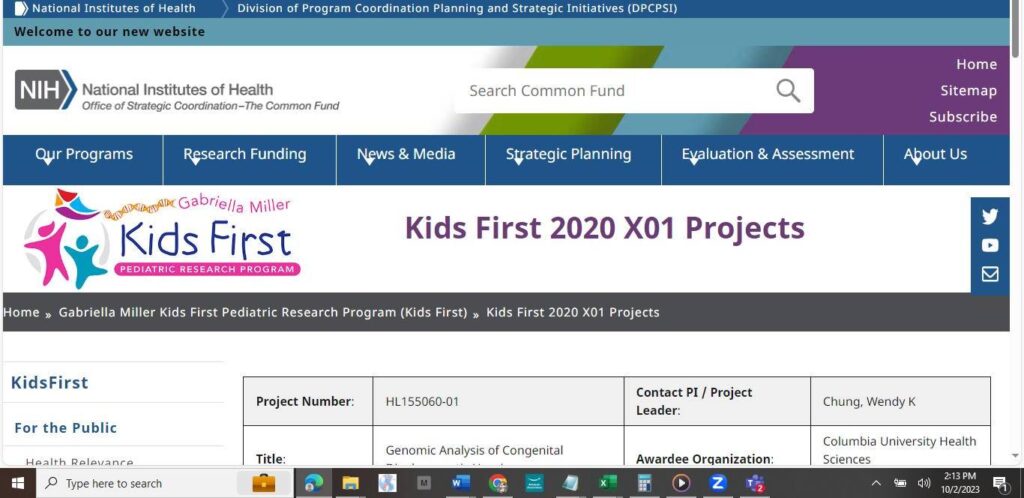CDH International is very proud to have participated in this research initiative since it’s inception in 2018 representing patients with Congenita Diaphragmatic Hernia, as well as being a voice for those with similar Congenital Anomalies.
We attended the annual webinar this fall.
From the NICHD Web Site:
The Gabriella Miller Kids First Pediatric Research Program (Kids First) is an NIH-wide program supported through the NIH Common Fund that was initiated in response to the 2014 Gabriella Miller Kids First Research Act. Kids First aims to foster collaborative research to uncover the causes of childhood cancers and structural birth defects and support data sharing within the pediatric research community.
In 2018, Kids First launched the Kids First Data Resource Portal through the Gabriella Miller Kids First Data Resource Center. The web-based portal serves as the primary entry port to large amounts of genetic and associated clinical and phenotypic data from patients with structural birth defects and childhood cancers and their families, as well as cloud-based workspace to empower analyses of these data. Both childhood cancers and structural birth defects are critical and costly conditions associated with substantial morbidity and mortality. Exposing the underlying genetic causes of these diseases has the potential to profoundly improve preventative measures, diagnostics, and therapeutic interventions.
Kids First also collaborates with other NIH programs, institutes, and centers, such as the INvestigation of Co-occurring conditions across Lifespan to Understand Down syndromE project and the National Institute on Alcohol Abuse and Alcoholism, to increase sequencing of Down syndrome and fetal alcohol spectrum disorders cohorts. The program is also working with the Common Fund’s Knockout Mouse Phenotyping Project to validate Kids First findings using mouse models.
Topic Areas
To date, Kids First has selected 33 patient cohorts for whole genome sequencing, which represents approximately 36,000 genomes and 14,000 patients affected with the following conditions:
- Adolescent Idiopathic Scoliosis
- Bladder Extrophy, Epispadias Complex
- Cancer Susceptibility
- CHARGE Syndrome (Coloboma of the eye, Heart Defects, Atresia of the choanae, Retardation of growth and development, Genital abnormalities including pubertal delay and infertility, Ear abnormalities with deafness and vestibular disorders)
- Childhood Acute Myeloid Leukemia
- Congenital Anomalies of the Kidney and Urinary Tract
- Congenital Diaphragmatic Hernia
- Congenital Heart Defects and Acute Lymphoblastic Leukemia in Children with Down Syndrome
- Cornelia de Lange Syndrome
- Craniofacial Microsomia
- Disorders of Sex Development
- Enchondromatoses
- Esophageal Atresia and Tracheoesophageal Fistulas
- Ewing Sarcoma
- Familial Leukemia
- Fetal Alcohol Spectrum Disorders
- Hearing Loss
- Infantile Hemangiomas
- Laterality Birth Defects
- Microtia
- Neural Tube Defects (Spina Bifida)
- Neuroblastomas
- Nonsyndromic Craniosynostosis
- Orofacial Clefts
- Osteosarcoma
- Patients with both childhood cancer & birth defects
- Pediatric Extracranial Germ Cell Tumors
- Pediatric Intracranial Germ Cell Tumors
- Pediatric Rhabdomyosarcoma
- Structural Brain Defects in Children
- Structural Heart & Other Defects
- Syndromic Cranial Dysinnervation Disorders
- T-cell Acute Lymphoblastic Leukemia
- Vascular Anomaly Syndromes; PHACE, LUMBAR, CLOVES and Overgrowth syndromes
(https://www.nichd.nih.gov/research/supported/gm-kidsfirst)











